Inside Mao's
Mausoleum

COLIN SIMPSON
Our Long March to See Leader's Embalmed Body
Chairman Mao Memorial Hall, Beijing
THIS is undoubtedly one of the strangest visits we’ve made – joining a massive queue of people waiting to catch the briefest glimpse of the embalmed body of Mao Zedong.
The remains of the communist revolutionary, who died in 1976 after ruling China for 27 tumultuous years, are housed in a specially built memorial hall in Tiananmen Square. It’s open to the public for four hours in the morning, so we caught an early bus to the square from our apartment in north-east Beijing.
When we arrived we found there was already an enormous queue, which trailed up, down and across one of the world’s largest urban spaces. We realised we were about to embark on our own long march. Our first task was to find the left-luggage office so we could leave our bags, water bottles and cameras, which are not allowed inside the hall. Then we took our places at the end of the line. We were resigned to a lengthy wait, but in fact the orderly and well marshalled queue moved along briskly.

We checked out the people around us. There were no other foreigners, and most of those we saw looked like out-of-towners. The average young Beijinger who you see, for example, queuing up outside the Apple store to buy the latest iPhone tends to be smartly dressed, as in any other capital city. Visitors who travel from other parts of the country tend to stand out as they lack that casual, cosmopolitan style. Many seemed genuinely excited at the prospect of paying their respects.
Troubling Historical Figure
Mao is, for many, a troubling historical figure. His Great Leap Forward campaign, which involved sweeping changes to agricultural practices, caused a famine that that led to tens of millions of deaths. Many more died during the Cultural Revolution, which plunged the country into chaos as millions were persecuted and imprisoned.
So I was surprised to see such enthusiasm for Mao. Some of the people in the queue had perhaps travelled from the rural areas that suffered worst during the Great Leap Forward. Most had probably heard first-hand accounts of the devastating famine from elderly relatives. Yet there was no sign of animosity or bitterness, just a sense of anticipation.

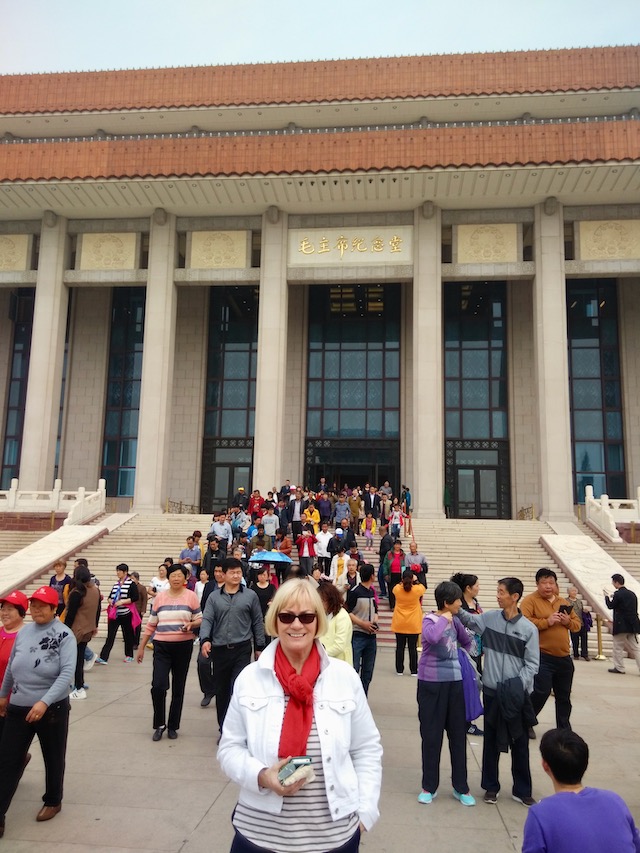
As we moved closer to the hall we passed monumental sculptures depicting groups of heroic revolutionary heroes such as soldiers and farmers. It was odd to see some of the idealised statues carrying semi-automatic rifles, and everyone looked implausibly well fed.
At last we were approaching the hall entrance. First we passed through a room with a huge white marble statue of Mao, where hundreds of visitors had laid heavily scented flowers. Then we were ushered into an inner chamber, and there was Mao, lying in a crystal casket. He was dressed in the style of suit made popular by Sun Yat-sen, and a red flag with a yellow hammer and sickle motif lay across him.
There has been a lot of speculation about the figure in the casket. Some say the unexpectedness of Mao’s death and the primitive nature of preservation techniques in China at the time caused the body to deteriorate. There were rumours at one point that formaldehyde was leaking from the corpse, and it has even been suggested that it’s actually a waxwork.
Ejected Back Into Square
Visitors aren’t given much of a chance to decide for themselves in the dimly lit room – we were ushered out by officious staff almost as soon as we arrived. Once we were ejected back out into the square there was nothing else to do except head for the souvenir shop, where we bought a Chairman Mao fridge magnet.
Verdict: It’s either bizarre and ghoulish, or strangely fascinating – I’m not sure which.
Top photo: The memorial hall, and our souvenir fridge magnet.
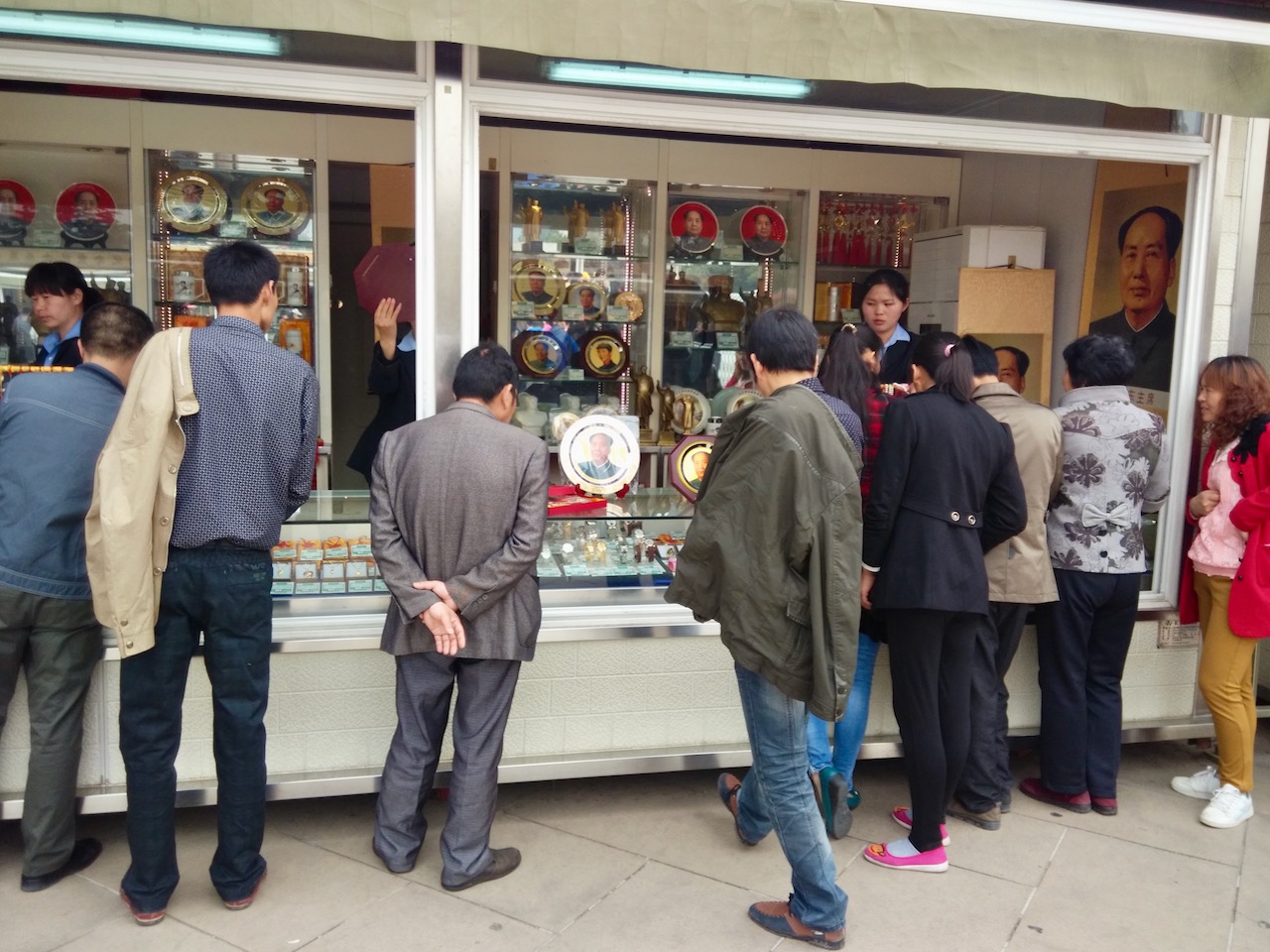
Scene of Ceremony and Tragedy
THE brisk walk around Tiananmen Square gave us an opportunity to gaze at the buildings that surround it and reflect on its history. On the west side stands the imposing Great Hall of the People, with its 10,000-capacity auditorium and 5,000-seat banqueting hall. To the east is the National Museum of China, which houses a fabulous collection of ancient artefacts.
To the north is the red Tiananmen gate, the entrance to the Forbidden City. A large portrait of Mao hangs from the gate, and it was here in October 1949 that he announced the creation of the People’s Republic of China. This came after the communists defeated the Nationalists in the Chinese Civil War. A massive painting of this event hangs in the museum.
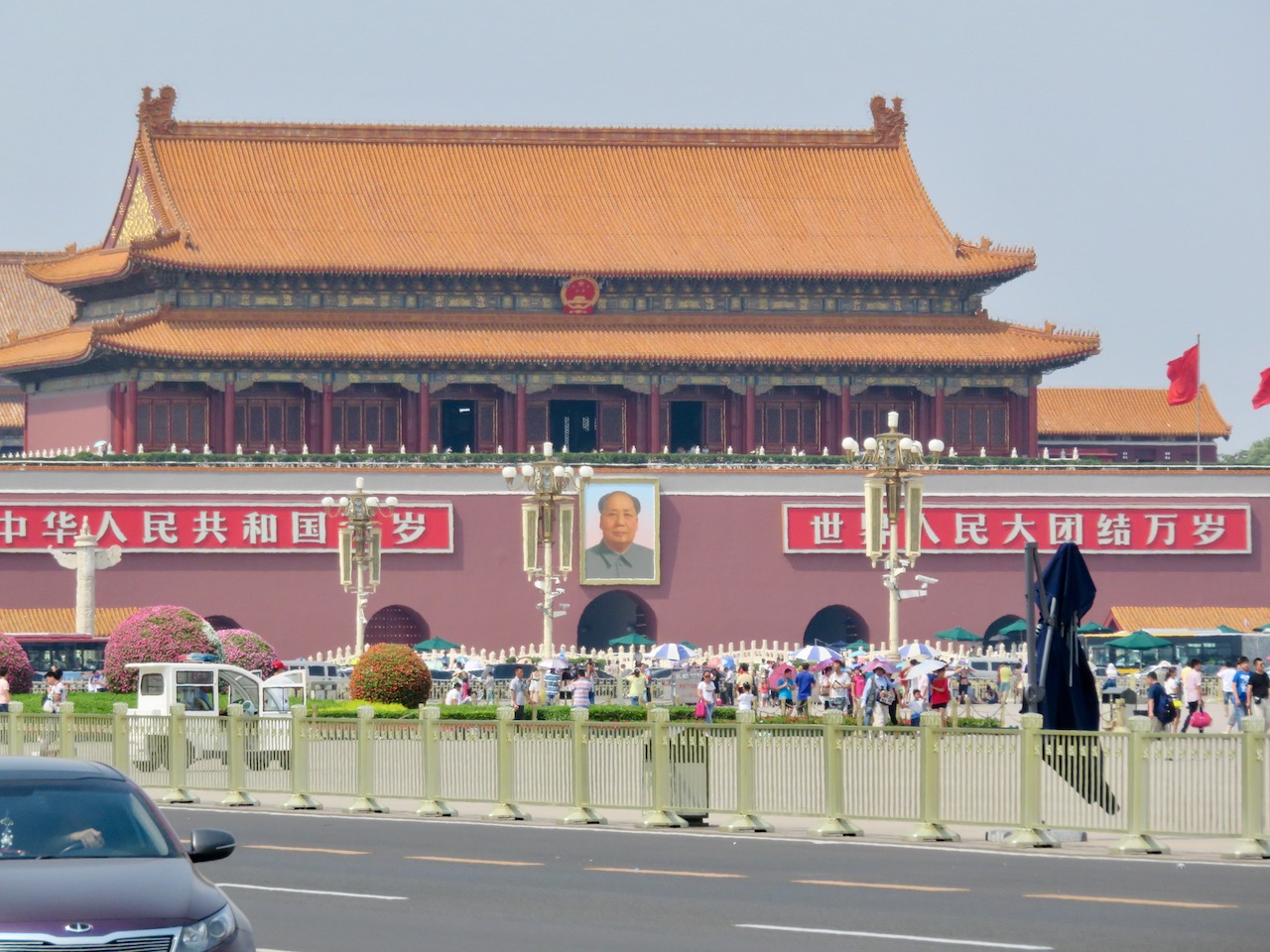
The Tiananmen portrait has occasionally been vandalized over the years – clearly not everyone is as keen on Mao as those standing with us in the queue. On such occasions a copy of the picture takes the place of the original. The portrait looks out at a flagpole from which the red Chinese flag flies.
On the south side is a huge, ornate gatehouse known as Zhengyangmen, and behind that stands a forbidding archery tower. Inside the square is the Monument to the People’s Heroes, and another large portrait depicts Sun Yat Sen, China’s first president. Sun is an unusual figure in that his memory is revered by both the communists and the Nationalists, who fled to Taiwan at the end of the civil war. The square was laid out in 1651, and greatly expanded in the late 1950s on Mao’s orders so it could hold more than 500,000 people.
Bloody Crackdown
Of course, for all the built-to-impress monuments and buildings, Tiananmen Square will forever be tainted by the memory of the bloody crackdown on student protesters on June 4, 1989. Ironically, the name Tiananmen means “Gate of Heavenly Peace”. I doubt a single Westerner has set foot on the square since the massacre without automatically recalling the iconic image of the brave Tank Man defying the army.
The memorial hall, which was completed in 1977, has an upper floor with exhibits honouring Mao and other revolutionaries including Deng Xiaoping. Deng, as paramount leader, was responsible for opening up the country to the outside world and introducing economic reforms that created the rich and powerful China we know today.
Deng also gave the order for the suppression of the protests, a decision that gravely damaged his reputation. It seems ironic that he is honoured at the site of the brutality he unleashed.

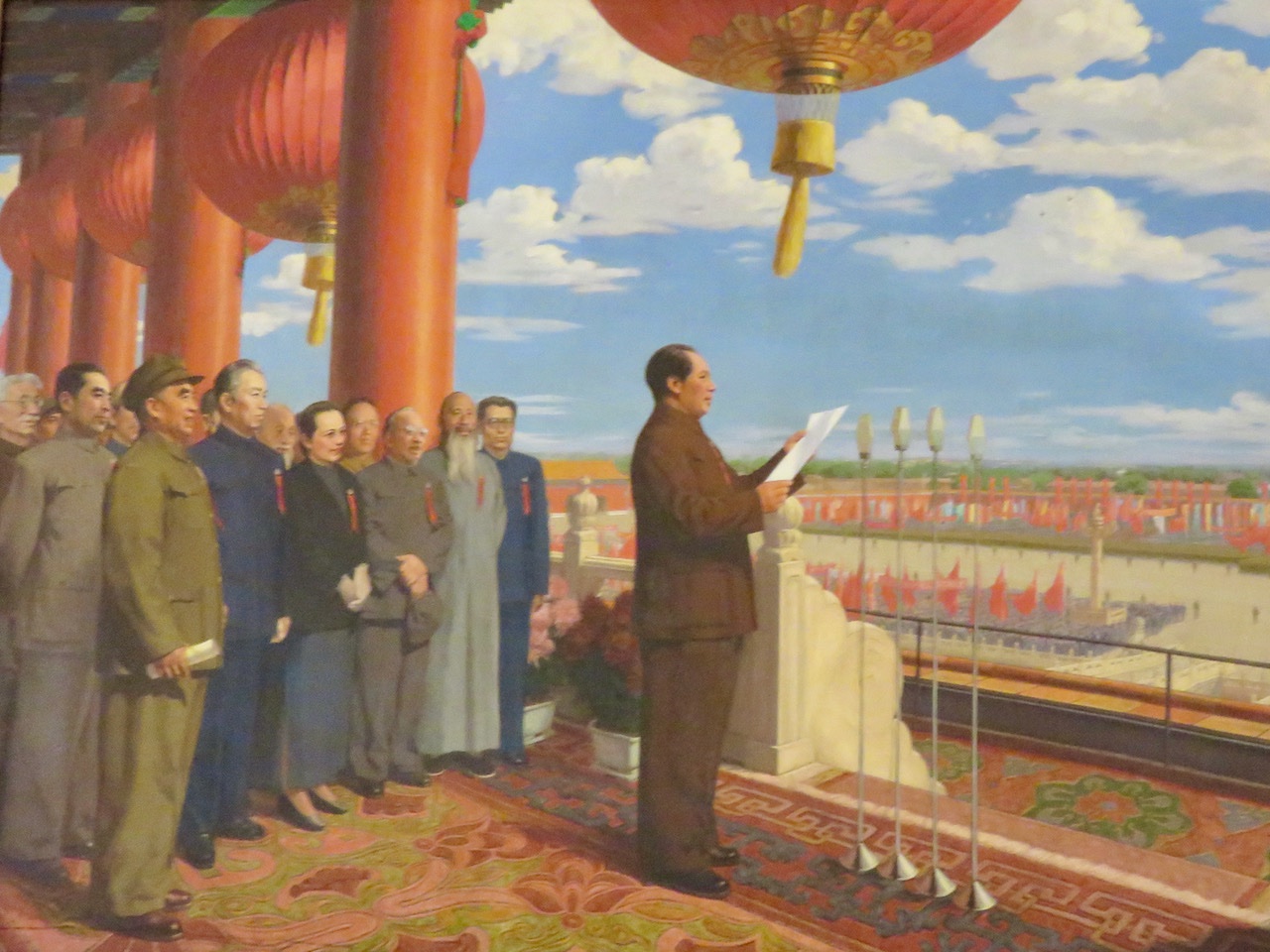
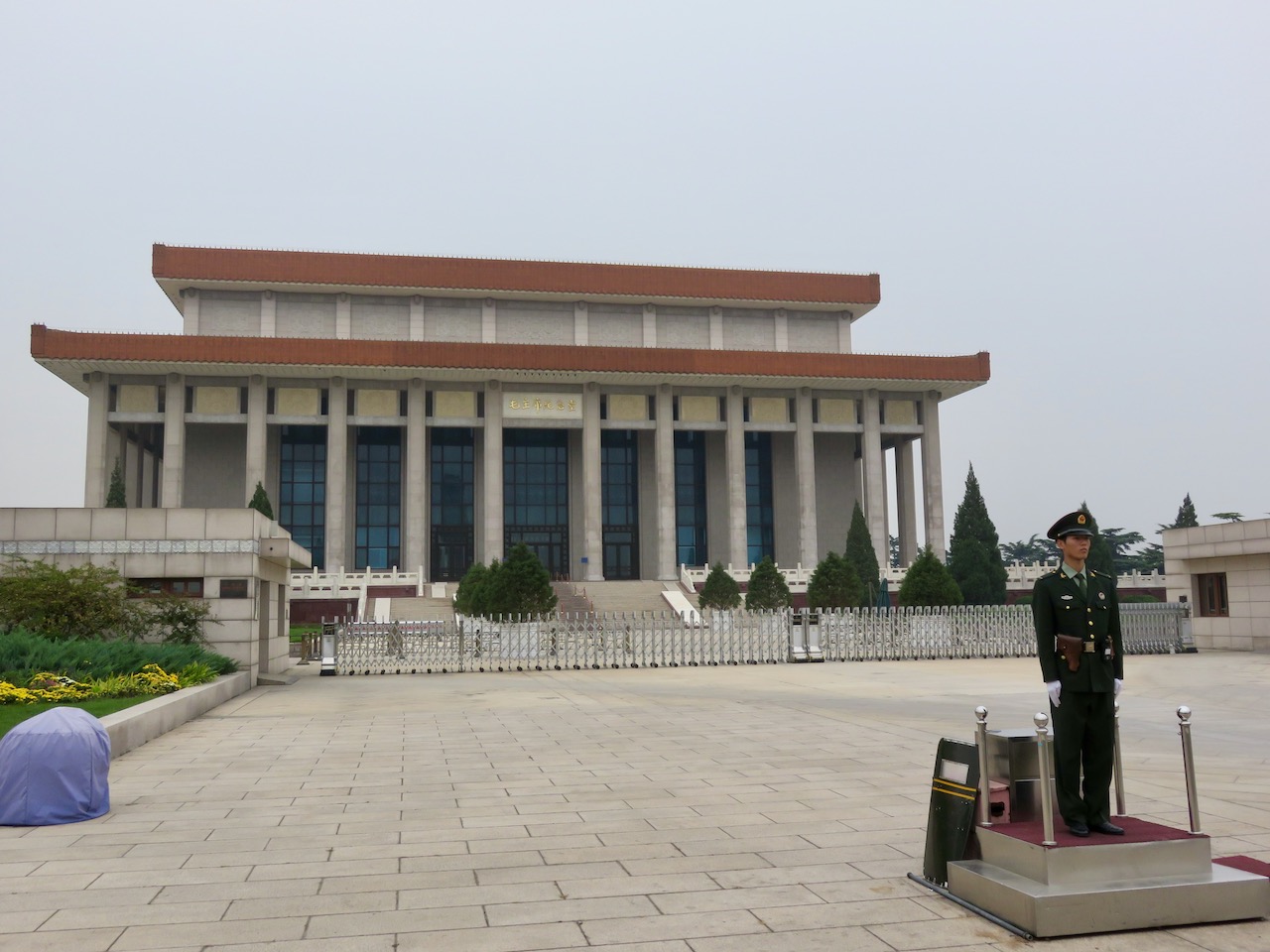

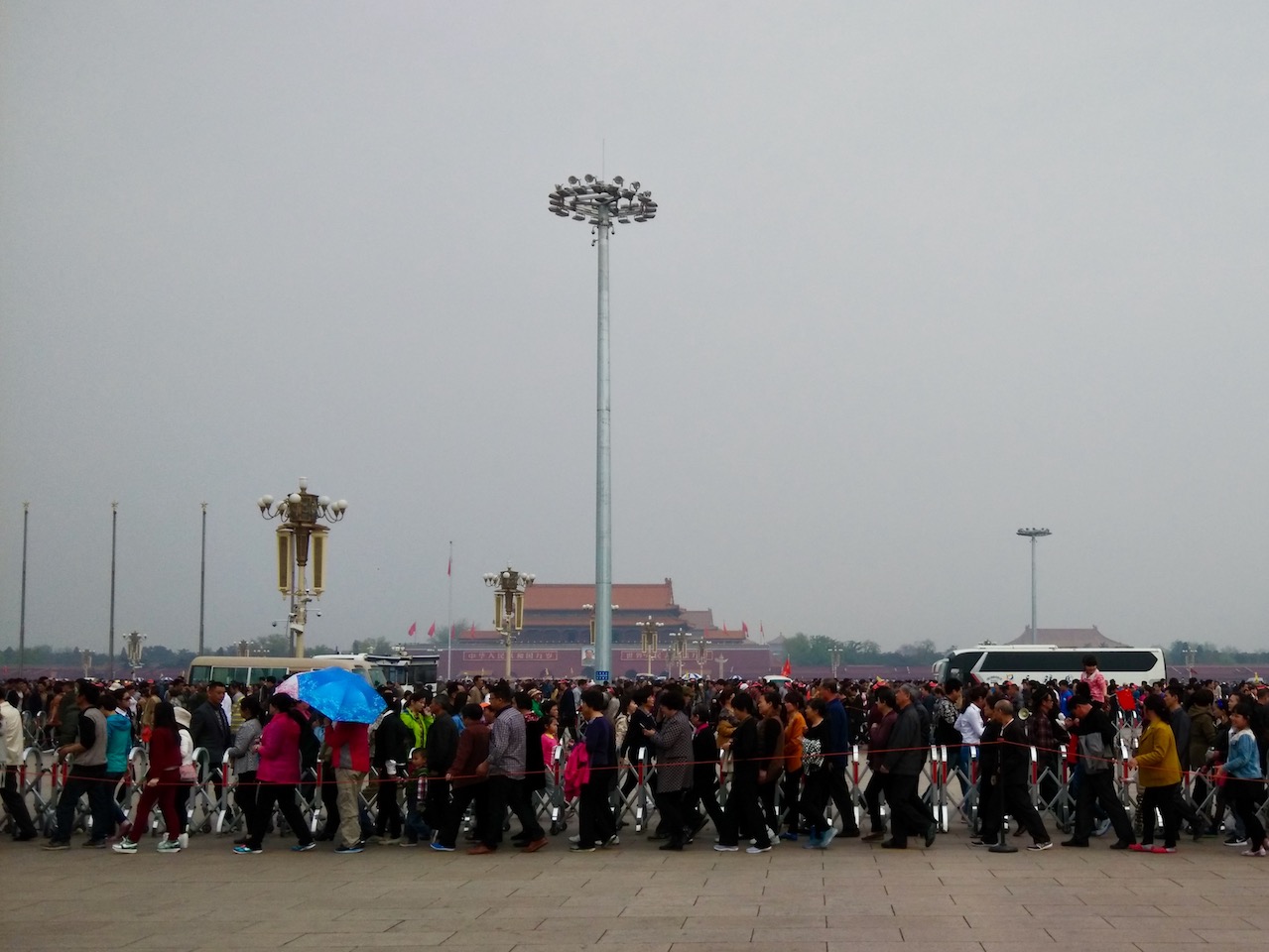
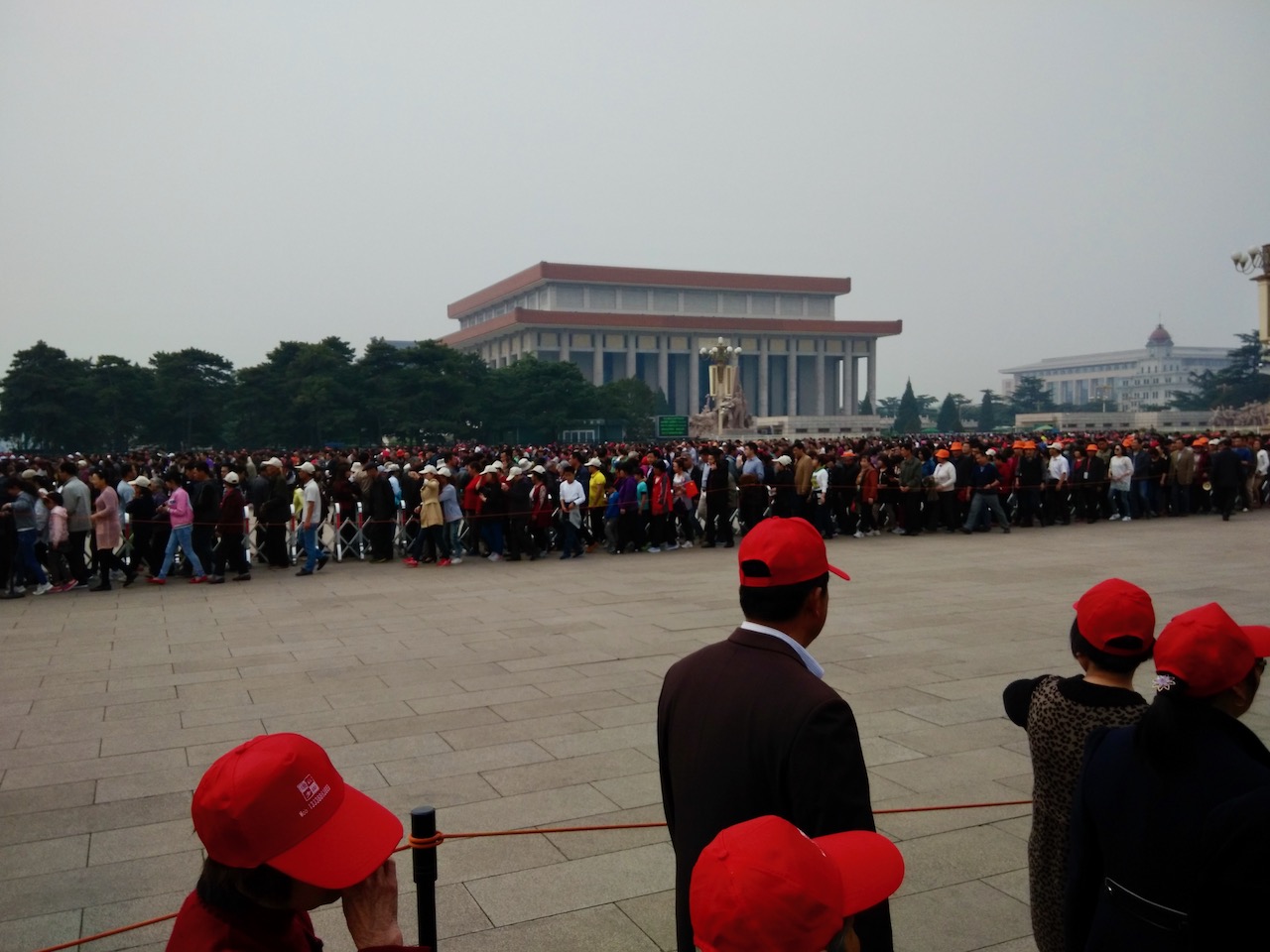
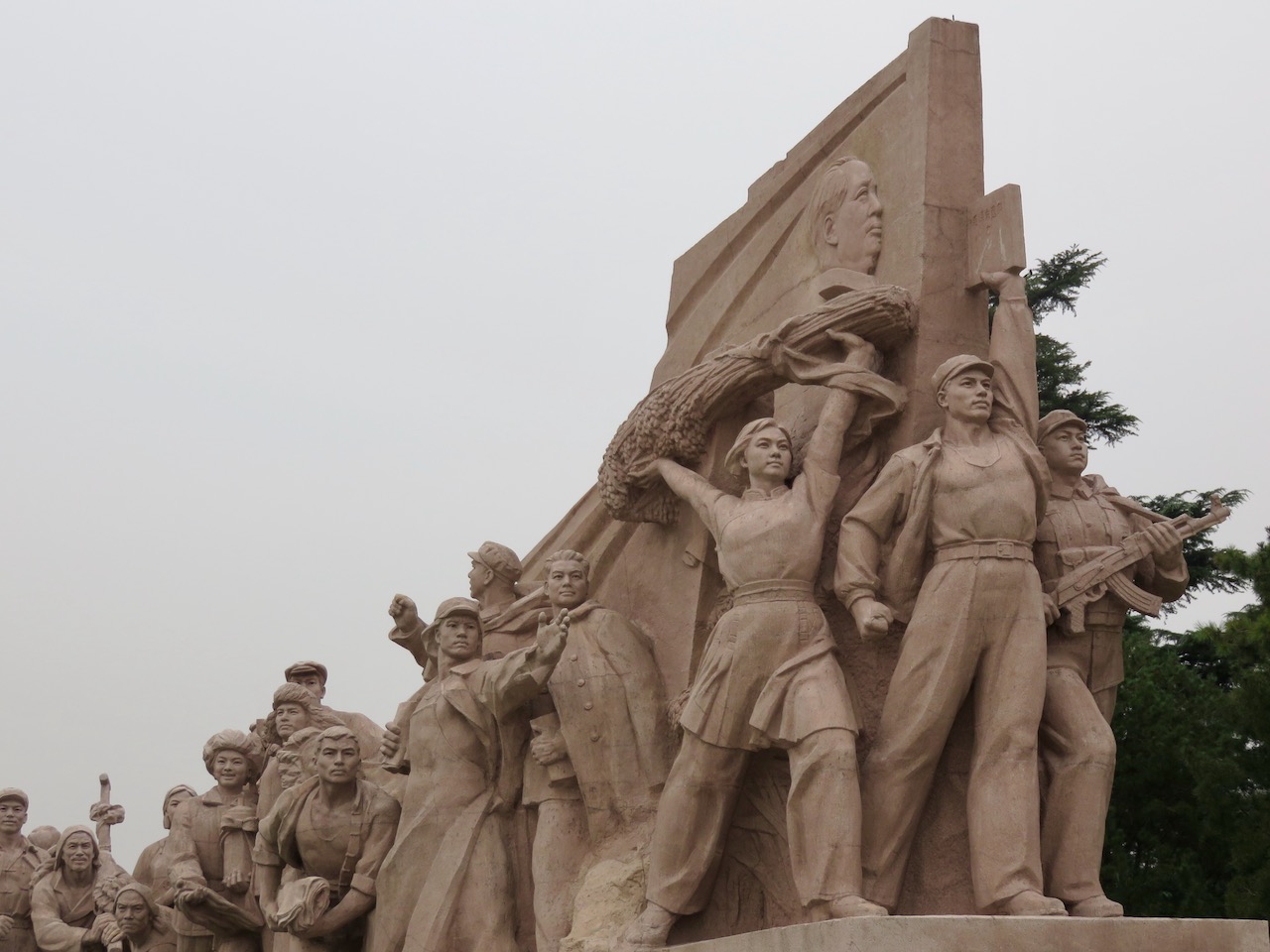
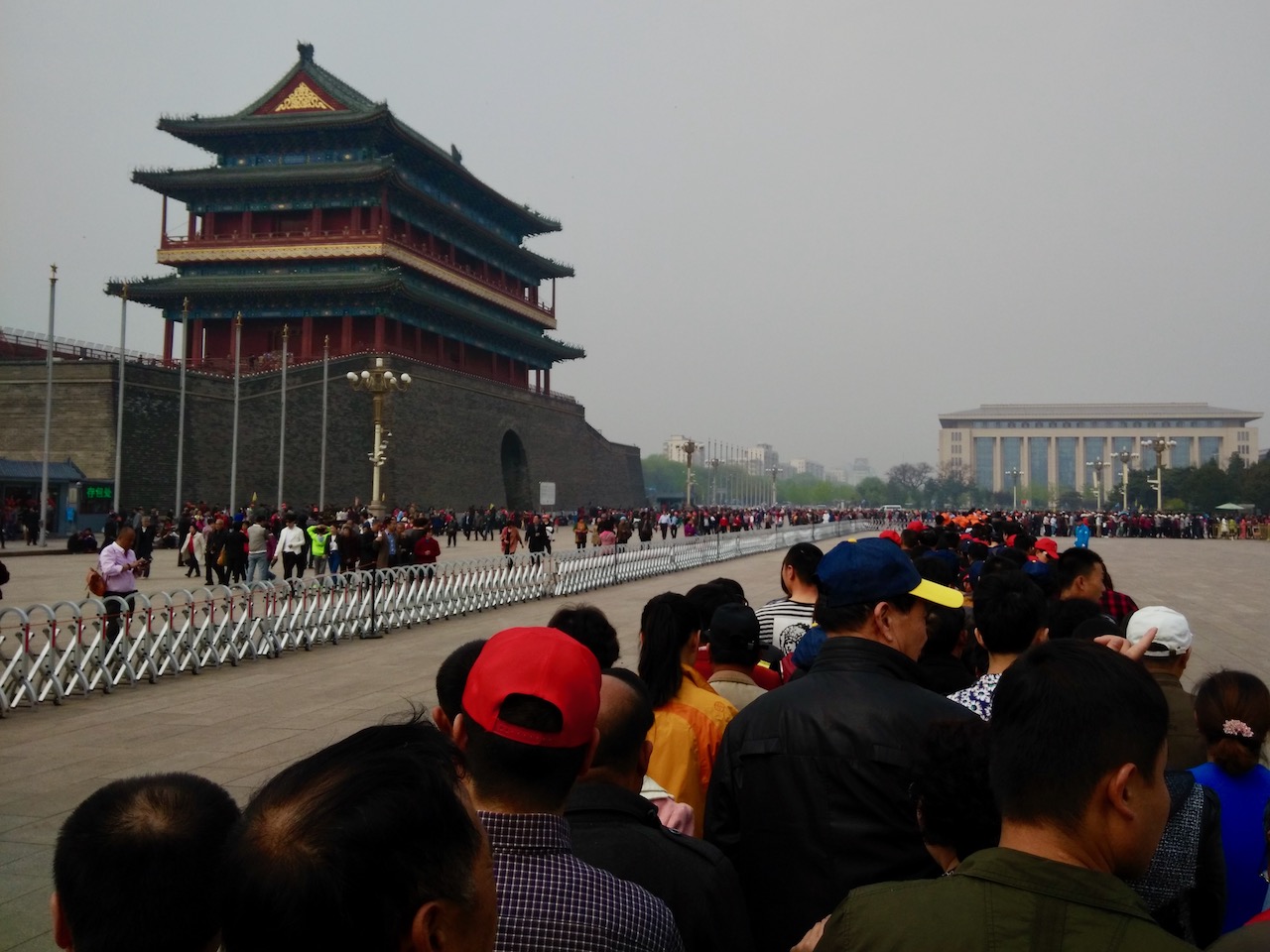
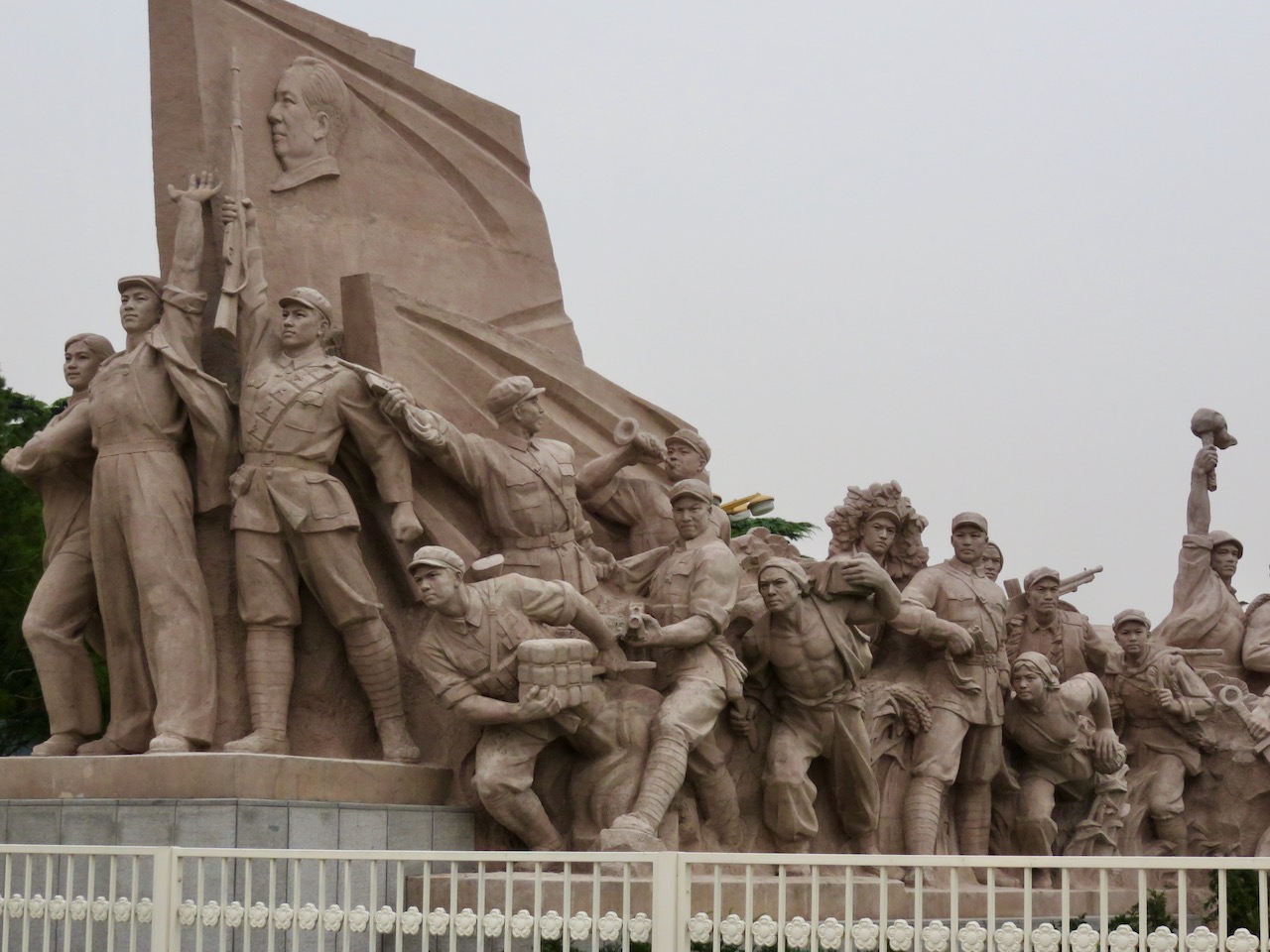
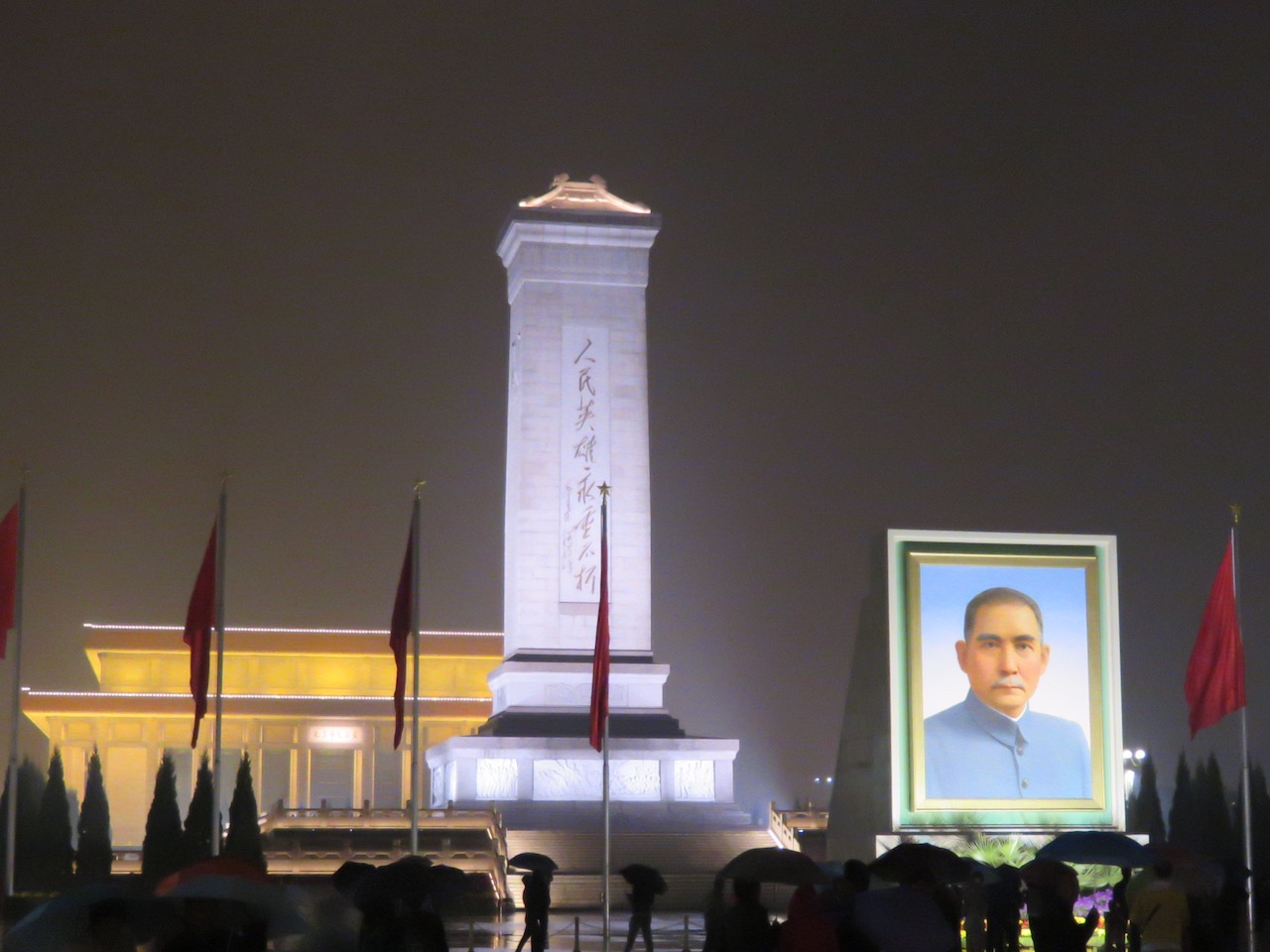

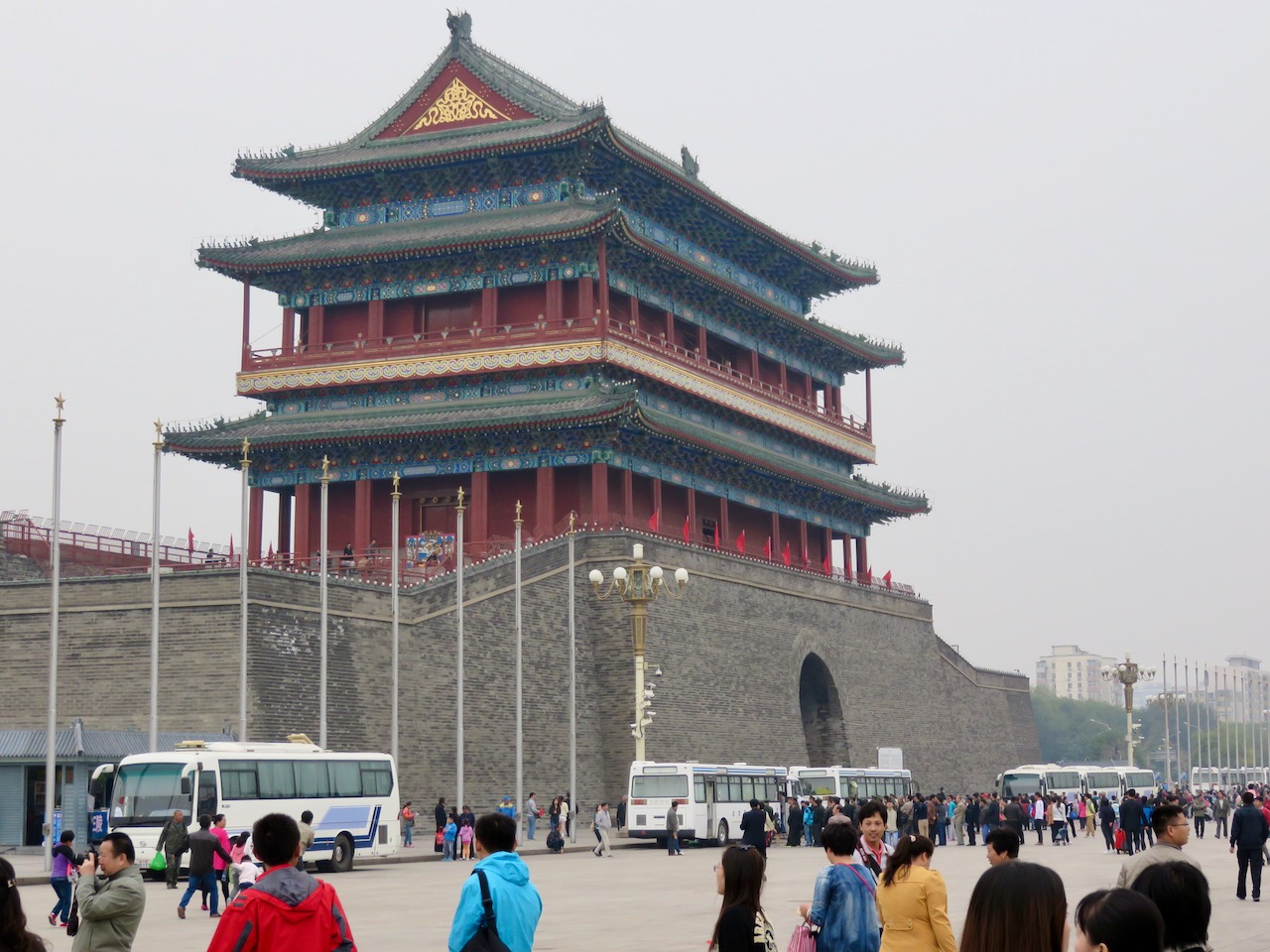
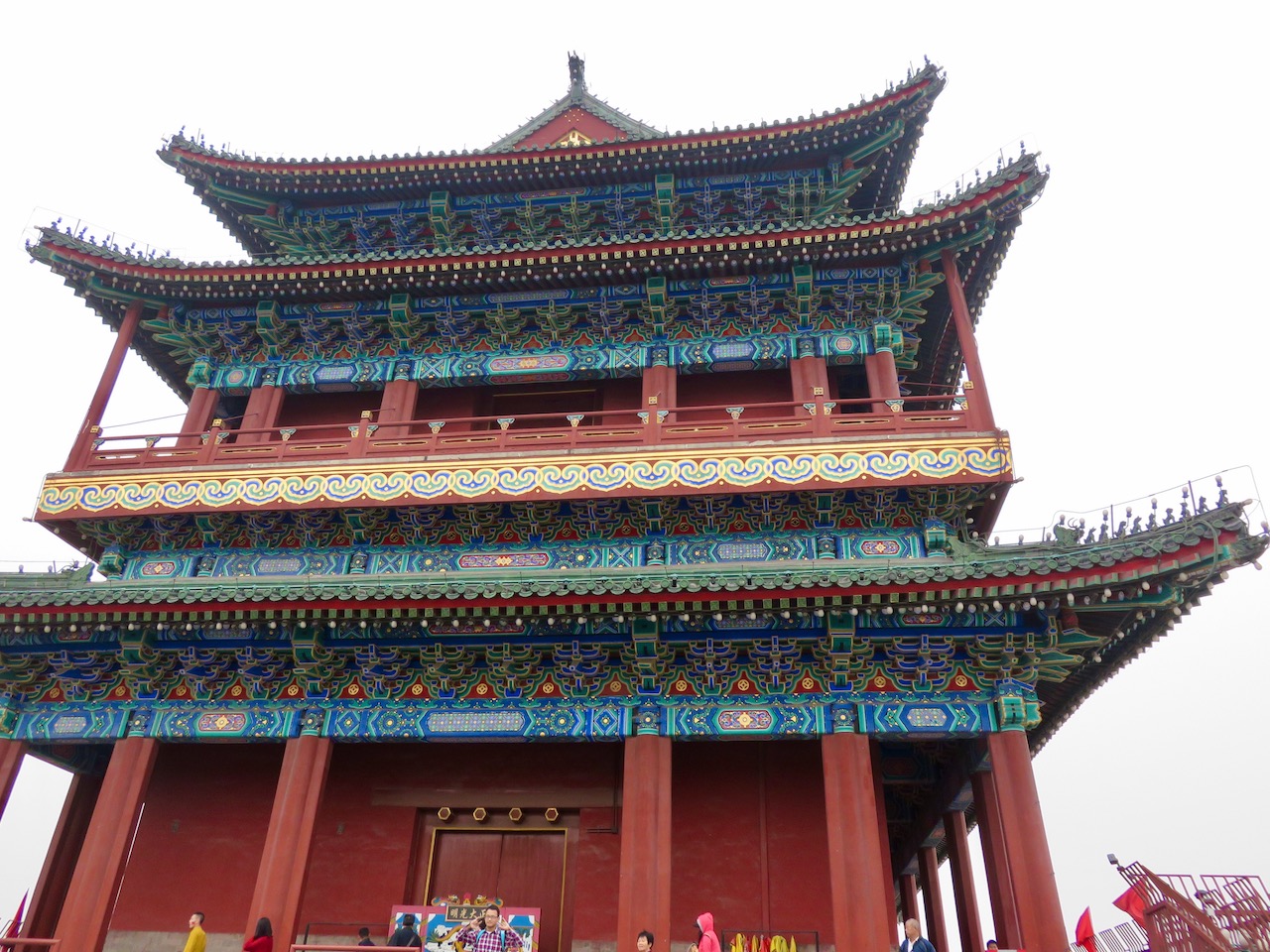
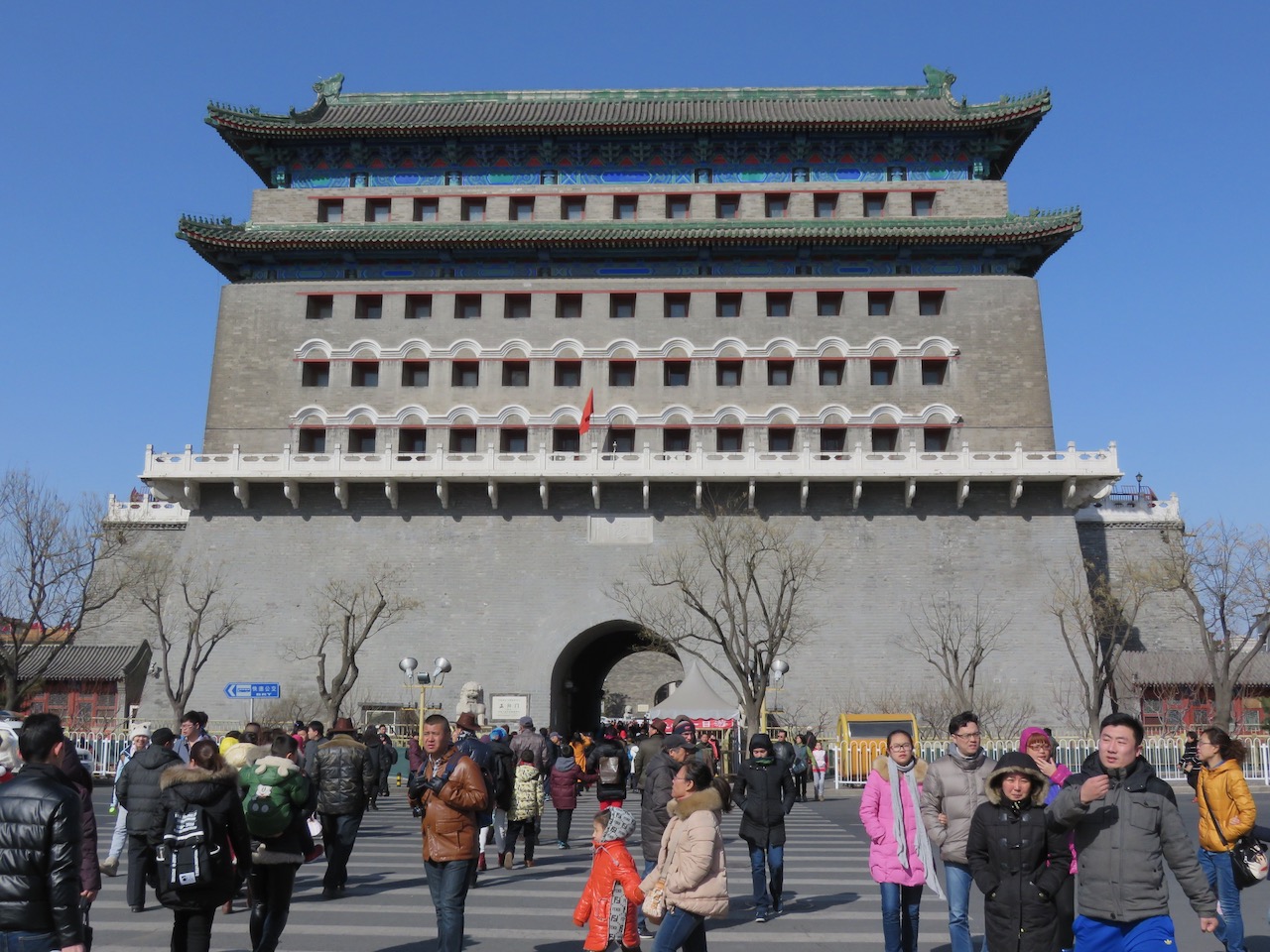
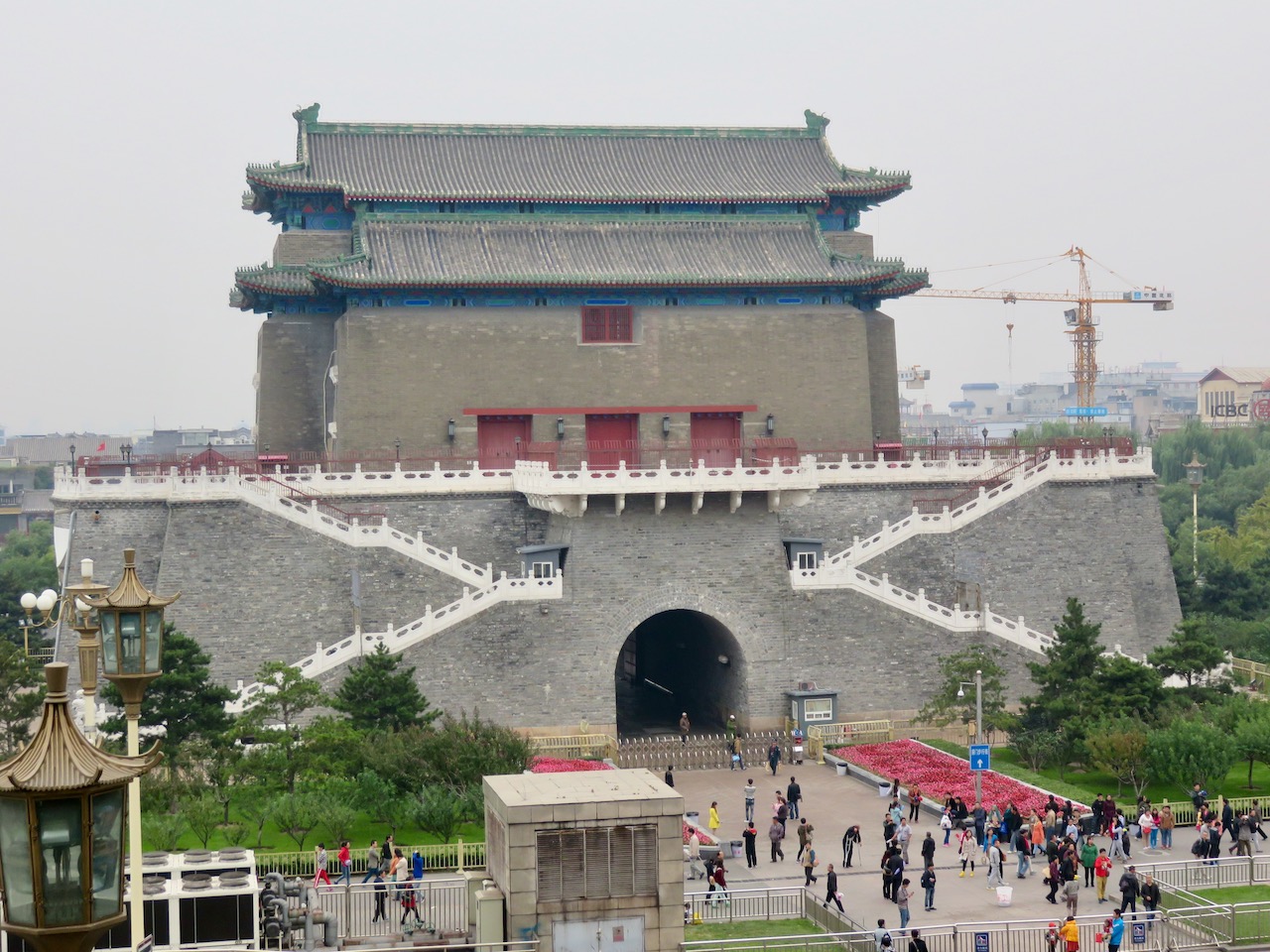
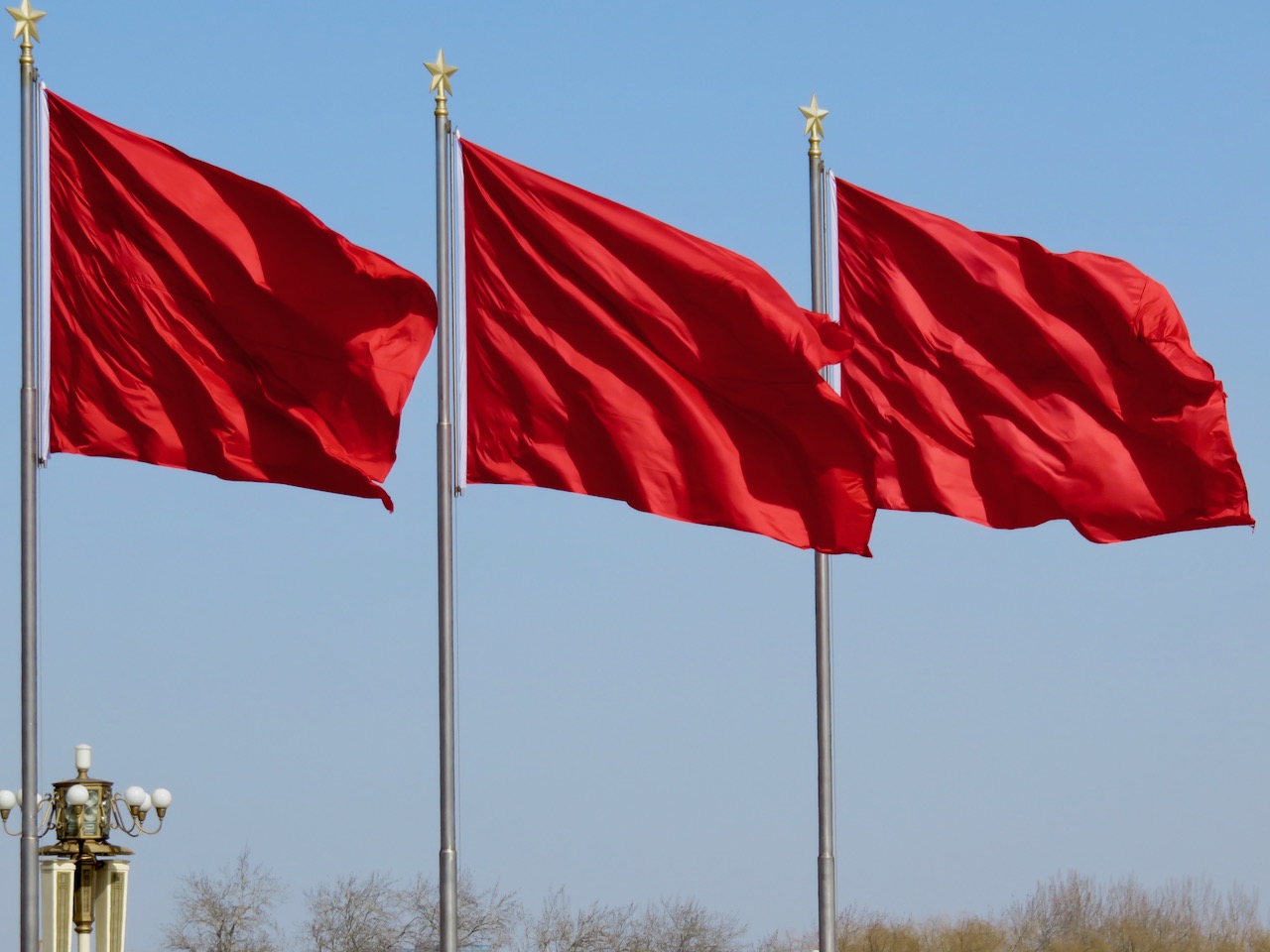
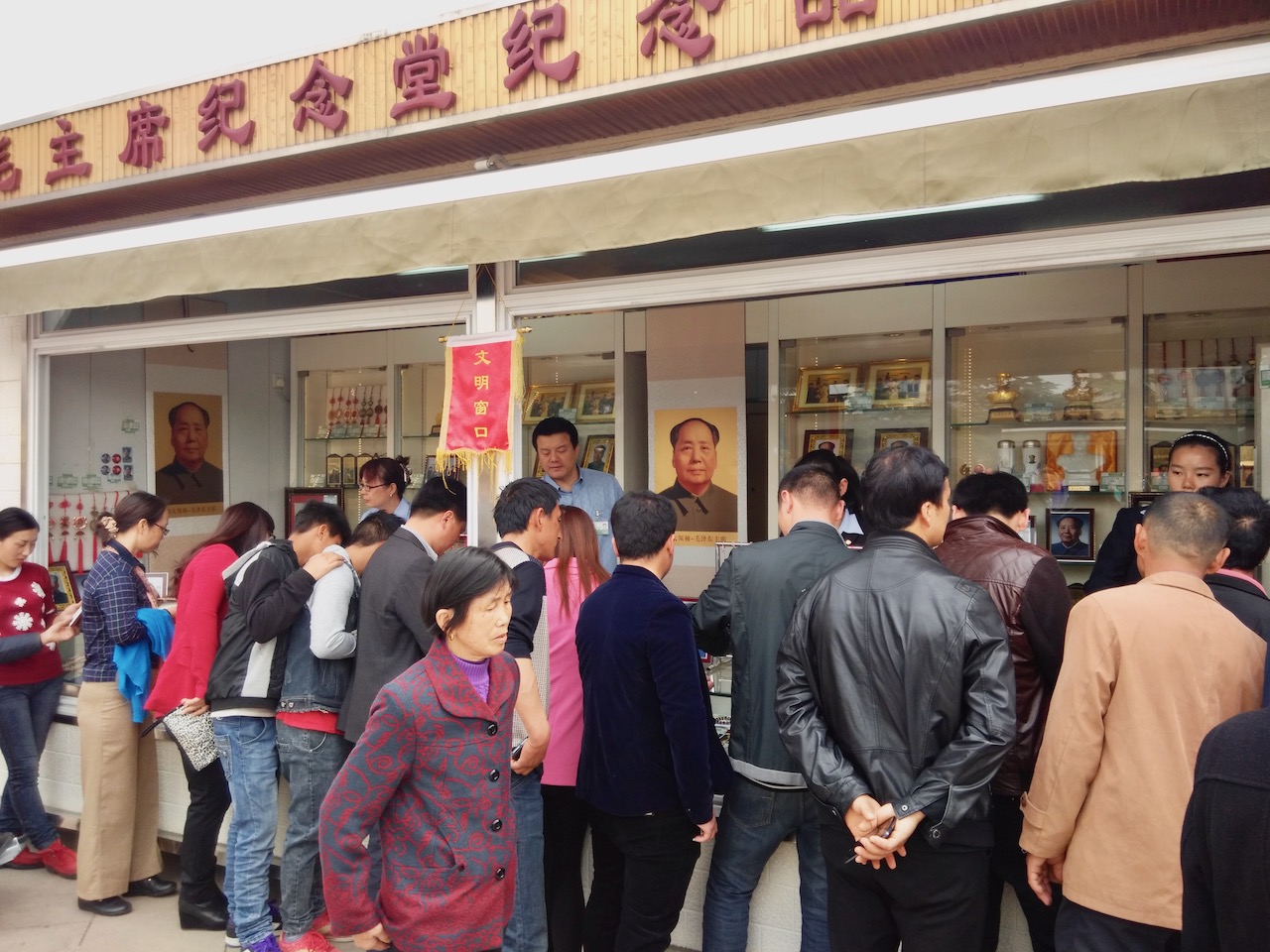
NEED TO KNOW: Chairman Mao Memorial Hall
GETTING THERE: Take subway Line 1 to either Tiananmen East of Tiananmen West station, or Line 2 to Qianmen Station. Alternatively, take bus 1, 2, 5, 52, 59, 82, 120, Sightseeing Bus Line 1 or Tourist Bus Line 2 to Tiananmen East. Or take bus 1, 5, 52, Sightseeing Bus Line 1 or 2, or Tourist Bus Line 2 to Tiananmen West. The hall is just a few minutes’ walk from the stations and bus stops.
OPENING HOURS: July and August 7 a.m. to 11 a.m.; rest of year 8 a.m. to 12 noon, closed Monday. Sept. 9 (anniversary of the day Mao died) and Dec. 26 (Mao’s birthday) 8 a.m. to 11.30 a.m. and 2 p/m to 4 p.m, expect larger crowds on these dates. The hall closes on special occasions; details can be found on nearby notice boards.
Admission is free. Visitors are expected to wear “neat” clothes and behave respectfully. Leave bags and cameras in the left luggage office before joining the queue. You will have to show your passport or other ID document. Photography is not allowed in the hall. Mobile phones should be switched off or set to silent mode.
The memorial rooms are open from 8.30 a.m. to 12 noon Tuesday to Sunday, admission free, groups only.
January 2021
MORE INFO
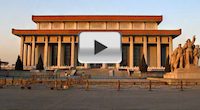
TRAVEL CHINA GUIDE is a good place to turn for English-language information about sites in Beijing, including the memorial hall and other buildings and monuments in Tiananmen Square. READ MORE
 ENCYCLOPEDIA BRITANNICA is a good place to start if you want to learn more about the life of Mao Zedong. READ MORE
ENCYCLOPEDIA BRITANNICA is a good place to start if you want to learn more about the life of Mao Zedong. READ MORE
RELATED
 TEMPLE OF HEAVEN: For centuries, Chinese emperors prayed here for good harvests. And if the crops failed, the blame fell on them. READ MORE
TEMPLE OF HEAVEN: For centuries, Chinese emperors prayed here for good harvests. And if the crops failed, the blame fell on them. READ MORE
 SLOW TRAIN FROM BEIJING: In December 2015 it was time for me to follow Colin to his new job in Hong Kong, which meant leaving my job in Beijing. I was travelling alone and decided to use my favourite means of transport – the train… READ MORE
SLOW TRAIN FROM BEIJING: In December 2015 it was time for me to follow Colin to his new job in Hong Kong, which meant leaving my job in Beijing. I was travelling alone and decided to use my favourite means of transport – the train… READ MORE
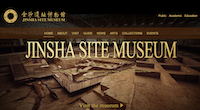 JINSHA SITE MUSEUM: In 2001, builders in China discovered a previously unknown ancient site, and subsequent excavations uncovered a vast treasure trove. READ MORE
JINSHA SITE MUSEUM: In 2001, builders in China discovered a previously unknown ancient site, and subsequent excavations uncovered a vast treasure trove. READ MORE
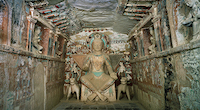 CAVES FULL OF TREASURE: For 56 years, Fan Jinshi tended a treasure trove of ancient Buddhist masterpieces at the Mogao Caves in China. Now she’s been rewarded with “Asia’s Nobel Prize”, worth $2.5 million… READ MORE
CAVES FULL OF TREASURE: For 56 years, Fan Jinshi tended a treasure trove of ancient Buddhist masterpieces at the Mogao Caves in China. Now she’s been rewarded with “Asia’s Nobel Prize”, worth $2.5 million… READ MORE
RECOMMENDED
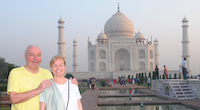 WELCOME TO OUR WORLD! Afaranwide’s home page – this is where you can find out about our latest posts and other highlights. READ MORE
WELCOME TO OUR WORLD! Afaranwide’s home page – this is where you can find out about our latest posts and other highlights. READ MORE
 TOP 10 VIRTUAL ATTRACTIONS: Many of the world’s most popular tourists sites are closed because of the coronavirus crisis, but you can still visit them virtually while you’re self-isolating. READ MORE
TOP 10 VIRTUAL ATTRACTIONS: Many of the world’s most popular tourists sites are closed because of the coronavirus crisis, but you can still visit them virtually while you’re self-isolating. READ MORE
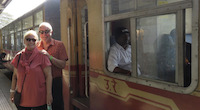 SHIMLA, QUEEN OF THE HILLS: Government officials once retreated to Shimla in the foothills of the Himalayas to escape India’s blazing hot summers. Now tourists make the same journey. READ MORE
SHIMLA, QUEEN OF THE HILLS: Government officials once retreated to Shimla in the foothills of the Himalayas to escape India’s blazing hot summers. Now tourists make the same journey. READ MORE
 TEN THINGS WE LEARNED: Our up-to-the-minute guide to creating a website, one step at a time. The costs, the mistakes – it’s what we wish we’d known when we started blogging. READ MORE
TEN THINGS WE LEARNED: Our up-to-the-minute guide to creating a website, one step at a time. The costs, the mistakes – it’s what we wish we’d known when we started blogging. READ MORE
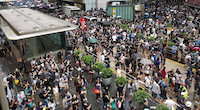 TROUBLED TIMES FOR EXPATS: Moving abroad can seem an idyllic prospect, but what happens when sudden upheavals or the inescapable realities of life intrude? READ MORE
TROUBLED TIMES FOR EXPATS: Moving abroad can seem an idyllic prospect, but what happens when sudden upheavals or the inescapable realities of life intrude? READ MORE
Disclosure: Afaranwide is an affiliate of leading travel operators such as Booking.com and Japan Rail Pass. If you purchase through our site we receive, at no additional cost to you, a small commission. We only work with companies we have used and recommend.
LET'S KEEP IN TOUCH!
Inside Mao's
Mausoleum

COLIN SIMPSON
Our Long March to See Leader's Embalmed Body
Chairman Mao Memorial Hall, Beijing
THIS is undoubtedly one of the strangest visits we’ve made – joining a massive queue of people waiting to catch the briefest glimpse of the embalmed body of Mao Zedong.
The remains of the communist revolutionary, who died in 1976 after ruling China for 27 tumultuous years, are housed in a specially built memorial hall in Tiananmen Square. It’s open to the public for four hours in the morning, so we caught an early bus to the square from our apartment in north-east Beijing.
When we arrived we found there was already an enormous queue, which trailed up, down and across one of the world’s largest urban spaces. We realised we were about to embark on our own long march. Our first task was to find the left-luggage office so we could leave our bags, water bottles and cameras, which are not allowed inside the hall. Then we took our places at the end of the line. We were resigned to a lengthy wait, but in fact the orderly and well marshalled queue moved along briskly.

We checked out the people around us. There were no other foreigners, and most of those we saw looked like out-of-towners. The average young Beijinger who you see, for example, queuing up outside the Apple store to buy the latest iPhone tends to be smartly dressed, as in any other capital city. Visitors who travel from other parts of the country tend to stand out as they lack that casual, cosmopolitan style. Many seemed genuinely excited at the prospect of paying their respects.
Troubling Historical Figure
Mao is, for many, a troubling historical figure. His Great Leap Forward campaign, which involved sweeping changes to agricultural practices, caused a famine that that led to tens of millions of deaths. Many more died during the Cultural Revolution, which plunged the country into chaos as millions were persecuted and imprisoned.
So I was surprised to see such enthusiasm for Mao. Some of the people in the queue had perhaps travelled from the rural areas that suffered worst during the Great Leap Forward. Most had probably heard first-hand accounts of the devastating famine from elderly relatives. Yet there was no sign of animosity or bitterness, just a sense of anticipation.


As we moved closer to the hall we passed monumental sculptures depicting groups of heroic revolutionary heroes such as soldiers and farmers. It was odd to see some of the idealised statues carrying semi-automatic rifles, and everyone looked implausibly well fed.
At last we were approaching the hall entrance. First we passed through a room with a huge white marble statue of Mao, where hundreds of visitors had laid heavily scented flowers. Then we were ushered into an inner chamber, and there was Mao, lying in a crystal casket. He was dressed in the style of suit made popular by Sun Yat-sen, and a red flag with a yellow hammer and sickle motif lay across him.
There has been a lot of speculation about the figure in the casket. Some say the unexpectedness of Mao’s death and the primitive nature of preservation techniques in China at the time caused the body to deteriorate. There were rumours at one point that formaldehyde was leaking from the corpse, and it has even been suggested that it’s actually a waxwork.
Ejected Back Into Square
Visitors aren’t given much of a chance to decide for themselves in the dimly lit room – we were ushered out by officious staff almost as soon as we arrived. Once we were ejected back out into the square there was nothing else to do except head for the souvenir shop, where we bought a Chairman Mao fridge magnet.
Verdict: It’s either bizarre and ghoulish, or strangely fascinating – I’m not sure which.
Top photo: The memorial hall, and our souvenir fridge magnet.

Scene of Ceremony and Tragedy
THE brisk walk around Tiananmen Square gave us an opportunity to gaze at the buildings that surround it and reflect on its history. On the west side stands the imposing Great Hall of the People, with its 10,000-capacity auditorium and 5,000-seat banqueting hall. To the east is the National Museum of China, which houses a fabulous collection of ancient artefacts.
To the north is the red Tiananmen gate, the entrance to the Forbidden City. A large portrait of Mao hangs from the gate, and it was here in October 1949 that he announced the creation of the People’s Republic of China. This came after the communists defeated the Nationalists in the Chinese Civil War. A massive painting of this event hangs in the museum.

The Tiananmen portrait has occasionally been vandalized over the years – clearly not everyone is as keen on Mao as those standing with us in the queue. On such occasions a copy of the picture takes the place of the original. The portrait looks out at a flagpole from which the red Chinese flag flies.
On the south side is a huge, ornate gatehouse known as Zhengyangmen, and behind that stands a forbidding archery tower. Inside the square is the Monument to the People’s Heroes, and another large portrait depicts Sun Yat Sen, China’s first president. Sun is an unusual figure in that his memory is revered by both the communists and the Nationalists, who fled to Taiwan at the end of the civil war. The square was laid out in 1651, and greatly expanded in the late 1950s on Mao’s orders so it could hold more than 500,000 people.
Bloody Crackdown
Of course, for all the built-to-impress monuments and buildings, Tiananmen Square will forever be tainted by the memory of the bloody crackdown on student protesters on June 4, 1989. Ironically, the name Tiananmen means “Gate of Heavenly Peace”. I doubt a single Westerner has set foot on the square since the massacre without automatically recalling the iconic image of the brave Tank Man defying the army.
The memorial hall, which was completed in 1977, has an upper floor with exhibits honouring Mao and other revolutionaries including Deng Xiaoping. Deng, as paramount leader, was responsible for opening up the country to the outside world and introducing economic reforms that created the rich and powerful China we know today.
Deng also gave the order for the suppression of the protests, a decision that gravely damaged his reputation. It seems ironic that he is honoured at the site of the brutality he unleashed.

















NEED TO KNOW: Chairman Mao Memorial Hall
GETTING THERE: Take subway Line 1 to either Tiananmen East of Tiananmen West station, or Line 2 to Qianmen Station. Alternatively, take bus 1, 2, 5, 52, 59, 82, 120, Sightseeing Bus Line 1 or Tourist Bus Line 2 to Tiananmen East. Or take bus 1, 5, 52, Sightseeing Bus Line 1 or 2, or Tourist Bus Line 2 to Tiananmen West. The hall is just a few minutes’ walk from the stations and bus stops.
OPENING HOURS: July and August 7 a.m. to 11 a.m.; rest of year 8 a.m. to 12 noon, closed Monday. Sept. 9 (anniversary of the day Mao died) and Dec. 26 (Mao’s birthday) 8 a.m. to 11.30 a.m. and 2 p/m to 4 p.m, expect larger crowds on these dates. The hall closes on special occasions; details can be found on nearby notice boards.
Admission is free. Visitors are expected to wear “neat” clothes and behave respectfully. Leave bags and cameras in the left luggage office before joining the queue. You will have to show your passport or other ID document. Photography is not allowed in the hall. Mobile phones should be switched off or set to silent mode.
The memorial rooms are open from 8.30 a.m. to 12 noon Tuesday to Sunday, admission free, groups only.
January 2021
MORE INFO

TRAVEL CHINA GUIDE is a good place to turn for English-language information about sites in Beijing, including the memorial hall and other buildings and monuments in Tiananmen Square. READ MORE
 ENCYCLOPEDIA BRITANNICA is a good place to start if you want to learn more about the life of Mao Zedong. READ MORE
ENCYCLOPEDIA BRITANNICA is a good place to start if you want to learn more about the life of Mao Zedong. READ MORE
RELATED
 TEMPLE OF HEAVEN: For centuries, Chinese emperors prayed here for good harvests. And if the crops failed, the blame fell on them. READ MORE
TEMPLE OF HEAVEN: For centuries, Chinese emperors prayed here for good harvests. And if the crops failed, the blame fell on them. READ MORE
 SLOW TRAIN FROM BEIJING: In December 2015 it was time for me to follow Colin to his new job in Hong Kong, which meant leaving my job in Beijing. I was travelling alone and decided to use my favourite means of transport – the train… READ MORE
SLOW TRAIN FROM BEIJING: In December 2015 it was time for me to follow Colin to his new job in Hong Kong, which meant leaving my job in Beijing. I was travelling alone and decided to use my favourite means of transport – the train… READ MORE
 JINSHA SITE MUSEUM: In 2001, builders in China discovered a previously unknown ancient site, and subsequent excavations uncovered a vast treasure trove. READ MORE
JINSHA SITE MUSEUM: In 2001, builders in China discovered a previously unknown ancient site, and subsequent excavations uncovered a vast treasure trove. READ MORE
 CAVES FULL OF TREASURE: For 56 years, Fan Jinshi tended a treasure trove of ancient Buddhist masterpieces at the Mogao Caves in China. Now she’s been rewarded with “Asia’s Nobel Prize”, worth $2.5 million… READ MORE
CAVES FULL OF TREASURE: For 56 years, Fan Jinshi tended a treasure trove of ancient Buddhist masterpieces at the Mogao Caves in China. Now she’s been rewarded with “Asia’s Nobel Prize”, worth $2.5 million… READ MORE
RECOMMENDED
 WELCOME TO OUR WORLD! Afaranwide’s home page – this is where you can find out about our latest posts and other highlights. READ MORE
WELCOME TO OUR WORLD! Afaranwide’s home page – this is where you can find out about our latest posts and other highlights. READ MORE
 TOP 10 VIRTUAL ATTRACTIONS: Many of the world’s most popular tourists sites are closed because of the coronavirus crisis, but you can still visit them virtually while you’re self-isolating. READ MORE
TOP 10 VIRTUAL ATTRACTIONS: Many of the world’s most popular tourists sites are closed because of the coronavirus crisis, but you can still visit them virtually while you’re self-isolating. READ MORE
 SHIMLA, QUEEN OF THE HILLS: Government officials once retreated to Shimla in the foothills of the Himalayas to escape India’s blazing hot summers. Now tourists make the same journey. READ MORE
SHIMLA, QUEEN OF THE HILLS: Government officials once retreated to Shimla in the foothills of the Himalayas to escape India’s blazing hot summers. Now tourists make the same journey. READ MORE
 TEN THINGS WE LEARNED: Our up-to-the-minute guide to creating a website, one step at a time. The costs, the mistakes – it’s what we wish we’d known when we started blogging. READ MORE
TEN THINGS WE LEARNED: Our up-to-the-minute guide to creating a website, one step at a time. The costs, the mistakes – it’s what we wish we’d known when we started blogging. READ MORE
 TROUBLED TIMES FOR EXPATS: Moving abroad can seem an idyllic prospect, but what happens when sudden upheavals or the inescapable realities of life intrude? READ MORE
TROUBLED TIMES FOR EXPATS: Moving abroad can seem an idyllic prospect, but what happens when sudden upheavals or the inescapable realities of life intrude? READ MORE
Disclosure: Afaranwide is an affiliate of leading travel operators such as Booking.com and Japan Rail Pass. If you purchase through our site we receive, at no additional cost to you, a small commission. We only work with companies we have used and recommend.
LET'S KEEP IN TOUCH!
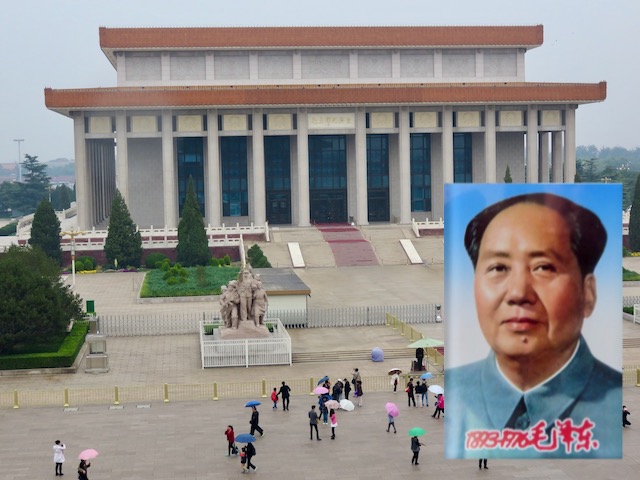
Inside Mao's
Mausoleum
Our Long March to See Leader's Embalmed Body

COLIN SIMPSON
Chairman Mao Memorial Hall, Beijing
THIS is undoubtedly one of the strangest visits we’ve made – joining a massive queue of people waiting to catch the briefest glimpse of the embalmed body of Mao Zedong.
The remains of the communist revolutionary, who died in 1976 after ruling China for 27 tumultuous years, are housed in a specially built memorial hall in Tiananmen Square. It’s open to the public for four hours in the morning, so we caught an early bus to the square from our apartment in north-east Beijing.
When we arrived we found there was already an enormous queue, which trailed up, down and across one of the world’s largest urban spaces. We realised we were about to embark on our own long march. Our first task was to find the left-luggage office so we could leave our bags, water bottles and cameras, which are not allowed inside the hall. Then we took our places at the end of the line. We were resigned to a lengthy wait, but in fact the orderly and well marshalled queue moved along briskly.

We checked out the people around us. There were no other foreigners, and most of those we saw looked like out-of-towners. The average young Beijinger who you see, for example, queuing up outside the Apple store to buy the latest iPhone tends to be smartly dressed, as in any other capital city. Visitors who travel from other parts of the country tend to stand out as they lack that casual, cosmopolitan style. Many seemed genuinely excited at the prospect of paying their respects.
Troubling Historical Figure
Mao is, for many, a troubling historical figure. His Great Leap Forward campaign, which involved sweeping changes to agricultural practices, caused a famine that that led to tens of millions of deaths. Many more died during the Cultural Revolution, which plunged the country into chaos as millions were persecuted and imprisoned.
So I was surprised to see such enthusiasm for Mao. Some of the people in the queue had perhaps travelled from the rural areas that suffered worst during the Great Leap Forward. Most had probably heard first-hand accounts of the devastating famine from elderly relatives. Yet there was no sign of animosity or bitterness, just a sense of anticipation.


As we moved closer to the hall we passed monumental sculptures depicting groups of heroic revolutionary heroes such as soldiers and farmers. It was odd to see some of the idealised statues carrying semi-automatic rifles, and everyone looked implausibly well fed.
At last we were approaching the hall entrance. First we passed through a room with a huge white marble statue of Mao, where hundreds of visitors had laid heavily scented flowers. Then we were ushered into an inner chamber, and there was Mao, lying in a crystal casket. He was dressed in the style of suit made popular by Sun Yat-sen, and a red flag with a yellow hammer and sickle motif lay across him.
There has been a lot of speculation about the figure in the casket. Some say the unexpectedness of Mao’s death and the primitive nature of preservation techniques in China at the time caused the body to deteriorate. There were rumours at one point that formaldehyde was leaking from the corpse, and it has even been suggested that it’s actually a waxwork.
Ejected Back Into Square
Visitors aren’t given much of a chance to decide for themselves in the dimly lit room – we were ushered out by officious staff almost as soon as we arrived. Once we were ejected back out into the square there was nothing else to do except head for the souvenir shop, where we bought a Chairman Mao fridge magnet.
Verdict: It’s either bizarre and ghoulish, or strangely fascinating – I’m not sure which.
Top photo: The memorial hall, and our souvenir fridge magnet.

Scene of Ceremony and Tragedy
THE brisk walk around Tiananmen Square gave us an opportunity to gaze at the buildings that surround it and reflect on its history. On the west side stands the imposing Great Hall of the People, with its 10,000-capacity auditorium and 5,000-seat banqueting hall. To the east is the National Museum of China, which houses a fabulous collection of ancient artefacts.
To the north is the red Tiananmen gate, the entrance to the Forbidden City. A large portrait of Mao hangs from the gate, and it was here in October 1949 that he announced the creation of the People’s Republic of China. This came after the communists defeated the Nationalists in the Chinese Civil War. A massive painting of this event hangs in the museum.

The Tiananmen portrait has occasionally been vandalized over the years – clearly not everyone is as keen on Mao as those standing with us in the queue. On such occasions a copy of the picture takes the place of the original. The portrait looks out at a flagpole from which the red Chinese flag flies.
On the south side is a huge, ornate gatehouse known as Zhengyangmen, and behind that stands a forbidding archery tower. Inside the square is the Monument to the People’s Heroes, and another large portrait depicts Sun Yat Sen, China’s first president. Sun is an unusual figure in that his memory is revered by both the communists and the Nationalists, who fled to Taiwan at the end of the civil war. The square was laid out in 1651, and greatly expanded in the late 1950s on Mao’s orders so it could hold more than 500,000 people.
Bloody Crackdown
Of course, for all the built-to-impress monuments and buildings, Tiananmen Square will forever be tainted by the memory of the bloody crackdown on student protesters on June 4, 1989. Ironically, the name Tiananmen means “Gate of Heavenly Peace”. I doubt a single Westerner has set foot on the square since the massacre without automatically recalling the iconic image of the brave Tank Man defying the army.
The memorial hall, which was completed in 1977, has an upper floor with exhibits honouring Mao and other revolutionaries including Deng Xiaoping. Deng, as paramount leader, was responsible for opening up the country to the outside world and introducing economic reforms that created the rich and powerful China we know today.
Deng also gave the order for the suppression of the protests, a decision that gravely damaged his reputation. It seems ironic that he is honoured at the site of the brutality he unleashed.

















NEED TO KNOW: Chairman Mao Memorial Hall
GETTING THERE: Take subway Line 1 to either Tiananmen East of Tiananmen West station, or Line 2 to Qianmen Station. Alternatively, take bus 1, 2, 5, 52, 59, 82, 120, Sightseeing Bus Line 1 or Tourist Bus Line 2 to Tiananmen East. Or take bus 1, 5, 52, Sightseeing Bus Line 1 or 2, or Tourist Bus Line 2 to Tiananmen West. The hall is just a few minutes’ walk from the stations and bus stops.
OPENING HOURS: July and August 7 a.m. to 11 a.m.; rest of year 8 a.m. to 12 noon, closed Monday. Sept. 9 (anniversary of the day Mao died) and Dec. 26 (Mao’s birthday) 8 a.m. to 11.30 a.m. and 2 p/m to 4 p.m, expect larger crowds on these dates. The hall closes on special occasions; details can be found on nearby notice boards.
Admission is free. Visitors are expected to wear “neat” clothes and behave respectfully. Leave bags and cameras in the left luggage office before joining the queue. You will have to show your passport or other ID document. Photography is not allowed in the hall. Mobile phones should be switched off or set to silent mode.
The memorial rooms are open from 8.30 a.m. to 12 noon Tuesday to Sunday, admission free, groups only.
January 2021
MORE INFO
TRAVEL CHINA GUIDE is a good place to turn for English-language information about sites in Beijing, including the memorial hall and other buildings and monuments in Tiananmen Square. READ MORE
ENCYCLOPEDIA BRITANNICA is a good place to start if you want to learn more about the life of Mao Zedong. READ MORE
RELATED
 TEMPLE OF HEAVEN: For centuries, Chinese emperors prayed here for good harvests. And if the crops failed, the blame fell on them. READ MORE
TEMPLE OF HEAVEN: For centuries, Chinese emperors prayed here for good harvests. And if the crops failed, the blame fell on them. READ MORE
 SLOW TRAIN FROM BEIJING: In December 2015 it was time for me to follow Colin to his new job in Hong Kong, which meant leaving my job in Beijing. I was travelling alone and decided to use my favourite means of transport – the train… READ MORE
SLOW TRAIN FROM BEIJING: In December 2015 it was time for me to follow Colin to his new job in Hong Kong, which meant leaving my job in Beijing. I was travelling alone and decided to use my favourite means of transport – the train… READ MORE
 JINSHA SITE MUSEUM: In 2001, builders in China discovered a previously unknown ancient site, and subsequent excavations uncovered a vast treasure trove. READ MORE
JINSHA SITE MUSEUM: In 2001, builders in China discovered a previously unknown ancient site, and subsequent excavations uncovered a vast treasure trove. READ MORE
 CAVES FULL OF TREASURE: For 56 years, Fan Jinshi tended a treasure trove of ancient Buddhist masterpieces at the Mogao Caves in China. Now she’s been rewarded with “Asia’s Nobel Prize”, worth $2.5 million… READ MORE
CAVES FULL OF TREASURE: For 56 years, Fan Jinshi tended a treasure trove of ancient Buddhist masterpieces at the Mogao Caves in China. Now she’s been rewarded with “Asia’s Nobel Prize”, worth $2.5 million… READ MORE
RECOMMENDED
 WELCOME TO OUR WORLD! Afaranwide’s home page – this is where you can find out about our latest posts and other highlights. READ MORE
WELCOME TO OUR WORLD! Afaranwide’s home page – this is where you can find out about our latest posts and other highlights. READ MORE
 TOP 10 VIRTUAL ATTRACTIONS: Many of the world’s most popular tourists sites are closed because of the coronavirus crisis, but you can still visit them virtually while you’re self-isolating. READ MORE
TOP 10 VIRTUAL ATTRACTIONS: Many of the world’s most popular tourists sites are closed because of the coronavirus crisis, but you can still visit them virtually while you’re self-isolating. READ MORE
 SHIMLA, QUEEN OF THE HILLS: Government officials once retreated to Shimla in the foothills of the Himalayas to escape India’s blazing hot summers. Now tourists make the same journey. READ MORE
SHIMLA, QUEEN OF THE HILLS: Government officials once retreated to Shimla in the foothills of the Himalayas to escape India’s blazing hot summers. Now tourists make the same journey. READ MORE
 TEN THINGS WE LEARNED: Our up-to-the-minute guide to creating a website, one step at a time. The costs, the mistakes – it’s what we wish we’d known when we started blogging. READ MORE
TEN THINGS WE LEARNED: Our up-to-the-minute guide to creating a website, one step at a time. The costs, the mistakes – it’s what we wish we’d known when we started blogging. READ MORE
 TROUBLED TIMES FOR EXPATS: Moving abroad can seem an idyllic prospect, but what happens when sudden upheavals or the inescapable realities of life intrude? READ MORE
TROUBLED TIMES FOR EXPATS: Moving abroad can seem an idyllic prospect, but what happens when sudden upheavals or the inescapable realities of life intrude? READ MORE
Disclosure: Afaranwide is an affiliate of leading travel operators such as Booking.com and Japan Rail Pass. If you purchase through our site we receive, at no additional cost to you, a small commission. We only work with companies we have used and recommend.



